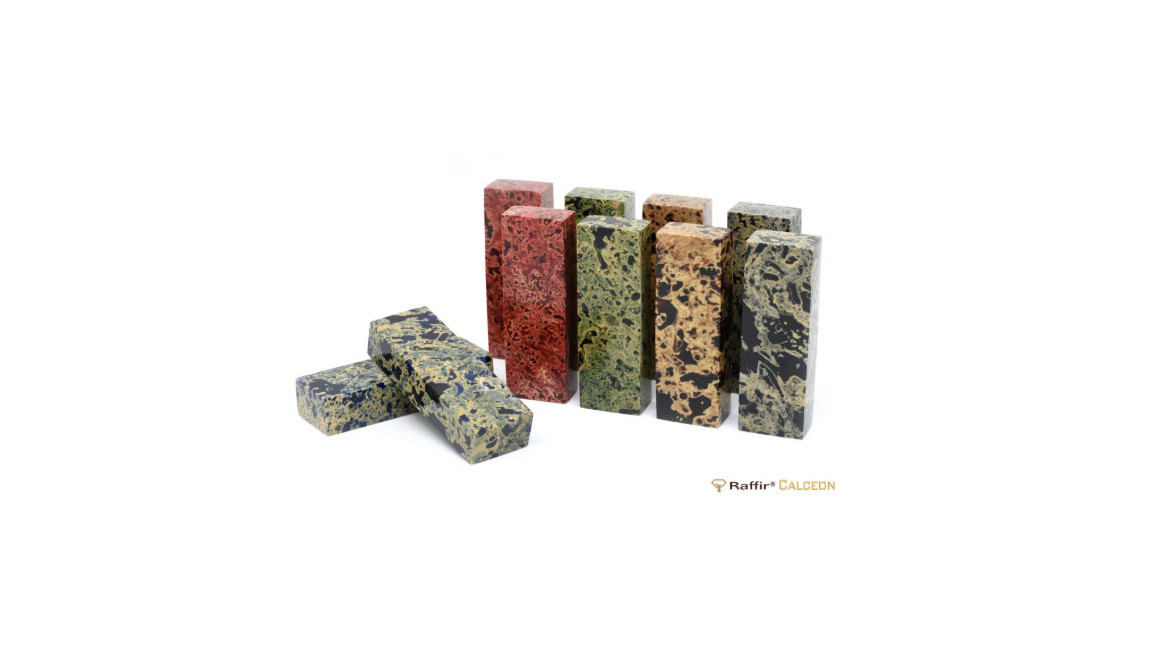CALCEON – by RAFFIR – Unique beauty forged underwater

Calceon – a fusion of natural calcite and modern resin to create a material both durable and aesthetic
Natural beauty forged underwater
The base of Raffir Calceon™ consists of natural calcite formations that take centuries to form in mineral-rich freshwater springs. The fine structures of the material mainly come from local vegetation that once grew in and around the springs before disappearing, leaving behind the porous mineral structure with distinct organic patterns. The natural origin of the base material ensures that every piece of Raffir Calceon™ displays its own unique expression of grain structures. In other words, each piece tells its own story of how it was shaped by nature over centuries.
One step closer to sustainability
The natural calcite material is infused with a durable resin through a vacuum and high-pressure stabilisation cycle. The resin is not only stronger and more heat-resistant than typical alternatives on the market, but it also uses new technology that allows nearly one-third of the raw material to be replaced by bio-based alternatives without compromising the quality we and our customers expect from our materials. For us, this represents an important step towards a more sustainable future.
Material variation
Each piece of Calceon™ has its own unique grain patterns and structures. In addition, we reinforce them with resin in five different shades: Deep Black, Ocean Blue, Caramel Brown, Ruby Red and Forest Green. You can see examples of the different colours and patterns below.
Processing and availability
Calcite is a soft mineral with a hardness of 3 on the Mohs scale, slightly harder than a fingernail. Measured in Shore D hardness, calcite is around 80, while the stabilising resin is 90 at room temperature. In practice, this means that standard tools for wood, bone, and horn are sufficient to cut, grind, drill, mill, and polish the material. Diamond tools are useful, but not necessary. The resin we use provides good hardness and thermal stability, which also makes it very easy to polish.
In Same Category
- Jamaican Rain Tree (Brya Ebony)
- Everything You Need to Know About Bog-Wood – An Exceptional Material for Artisans
- Seafoam Block: A Unique Material for Crafting and Knife Handles
- The Use of Drill Bits and Taps in Knife Making: Techniques and Advantages
- Differences Between Fawn, Yearling, and Spike: Understanding the Deer Life Cycle

Comments
No comment at this time!
Leave your comment